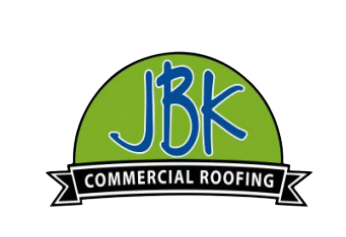Preparing your Commercial Flat Roofing For Spring and Summer
Winter can be rough. Colder climates have months of drastically fluctuating temperatures, ice, and driving winds that can damage roofs. Even though we might not get the snow accumulation of the more northern states, occasional snowfall, ice storms, and our frequent freeze-thaw cycles can often have more drastic effects on the surfaces they encounter. Therefore Kentucky and Tennessee winter months can be expected to inflict roof damage.
A lot of responsibility is placed on commercial flat roofing systems. They have to deal with these difficult conditions and we expect them to remain secure. And even though flat and low-sloped roofing systems such as Duro-Last are very reliable, there are still things we can do to give them the best chance at remaining effective for a long time.
Here are a few tips to get your commercial flat roofing system ready for the spring and summer.
Clean Your Roof
The very first and most basic thing you can do to help your roof is to simply clean it. Take the time to clear any debris that might have gathered on top of your commercial flat roof over the winter months. This could include any sticks, leaves, or even errant litter that might have caught the wind and landed on your roof.
This will help protect your roof from the possibility of biological growth at the same time as it saves your roof from further damage. Heavy branches and such can continue to get blown around and compromise your commercial flat roofing system.
Check the Membrane
There are various ways you can seal up your roof to protect your building from moisture and cold weather. Insulation is placed over the roof and a membrane can be placed on top of it. However, these membranes will have seams. Duro-Last roofing systems are prefabricated so most of the seamwork isn’t done on top of the roof. Any other membrane with more seams is going to have more potential for the seams to be compromised.
You want to be sure the membrane’s seams are flush throughout your commercial flat roof. And separation can result in leaks which have drastically negative effects on your structure.
Look For Collections of Water
Melted snow and rainwater should be mostly running off of your commercial low slope/ flat roofing system. There are various means in which it accomplishes this. Drains should be clear of debris. Passages of water should be clear and unobstructed. A well-constructed membrane won’t have a problem keeping this water out of your facility, but long-term collections of water can wear just about anything down. Water is nature’s solvent and erosion agent.
Checking to make sure everything is flowing as it should will set you up for the numerous spring showers that are sure to come. Water might seem mostly innocuous, but it can cause major issues with enough time.
Assess the Surroundings
The end of winter is a great time of year to look for any future issues. This includes items such as power lines or light poles that have become structurally damaged over the winter. Or perhaps there’s a tree next to your building that is growing closer and closer to your commercial flat roof. These items might not be immediate dangers, but they can cause problems in the future if they are not addressed.
Trim back any tree limbs that are encroaching on your space. Call the city to fix any sub-standard utilities. Preventing a problem is always better than dealing with one.
Remove Animal Nests
Commercial flat roofing often has a lot of nooks and crevices that animals love to crawl into. Check all ducts and machines such as air conditioners for new tenants that might have moved in over the winter months.
This includes birds, squirrels, and even raccoons. Cats have been known to scale the occasional building to find a warm place to hide out until the weather becomes more favorable. These animals might be cute but you don’t want them living in your space. They are liable to cause all sorts of damage not only to your commercial roofing system, but your building in general.
Inspect Inside
One great way to find out if there is any damage to the outside of your building is to locate any damage inside the building. Leaks often show themselves as watermarks in ceilings and drywall. Rodent infestations leave scratch marks and other traces that might leave an odor.
Damage to a roof can be small enough on the outside to be difficult to spot. But the repercussions of this damage can be quite noticeable if you are looking in the correct place.
Schedule a Professional Inspection
The absolute best thing you can do for yourself, however, is to schedule a routine inspection with a local professional like JBK Roofing. Our years of experience can help you get your commercial roofing system into its best condition. This helps extend your roof’s lifespan while ensuring the security of your building.
